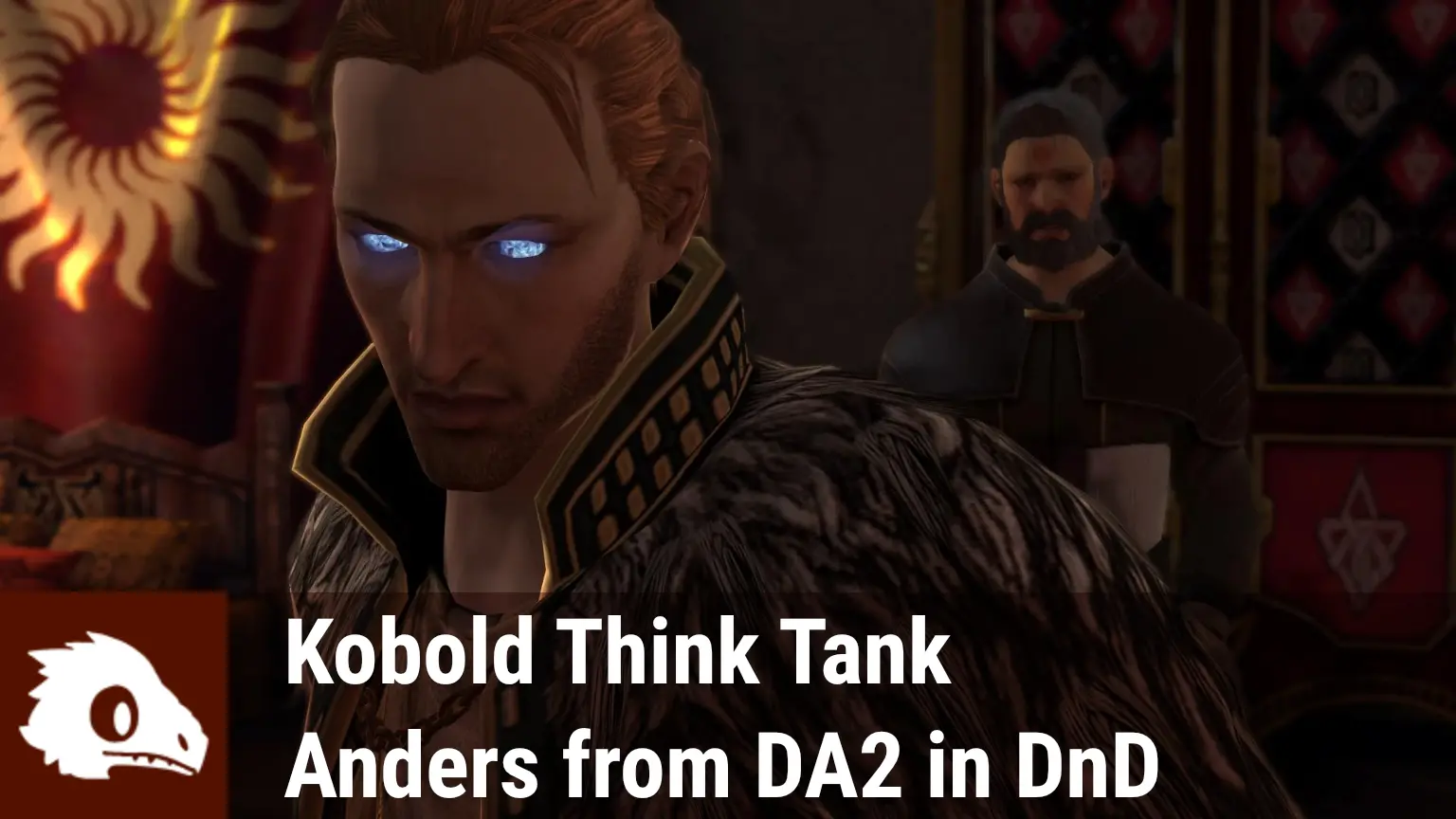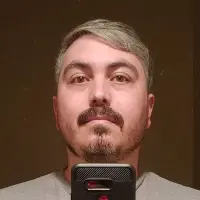How to Build Anders from Dragon Age 2 in DnD

In Dragon Age 2, Anders was an interesting character. Because of his possession by a spirit of justice, he was a completely different character than he was in Dragon Age: Awakening, and he ended up being one of the most interesting (and plot-relevant) companion characters in the game. He was also the designated healer, unless Hawke specialized in it, making him an important part of many party configurations. His unique background, as well as his dual roles as healer and spell-slinger, make him an interesting basis for a DnD character. Here’s how to build him.
Picking a Class and Subclass
The most important part of Anders’ character is the source of his powers: his union with the spirit of Justice. Those who played Dragon Age: Awakening remember Anders as a snarky mage who wanted to avoid responsibility—a far cry from the zealot we see in Dragon Age 2 who is willing to blow up a cathedral for his cause. That relationship with the spirit of justice is the cornerstone of this build.
Anders would most likely be a Warlock with the Celestial patron. This gives him some good offensive abilities, like all Dragon Age mages have, as well as some solid healing abilities. It’s also a great tie-in for his relationship with the spirit of justice that’s so vital to his character.
Warlocks are often thought of as spooky occult-themed characters, but the Celestial patron gives a tie-in to the forces of good—although, as we see in Anders, good does not always mean nice. To capture the spirit of justice like in Anders, you’d probably want some sort of Archon patron. There’s even a Justice Archon, if you want to get it that close. Archons are obsessed with good to the point that they often don’t care about collateral damage if it means stopping evil.
Choosing a Celestial Warlock means that righteous spirit is now a character in your campaign—one which the DM can use, and one that can ask things of you. It probably has its own agenda independent of your party’s, and that can mean some interesting scenarios in your campaign. Make sure to coordinate with your DM how much interaction you want with your patron; Warlocks can vary widely based on how much you want to incorporate the patron into your game.
Picking a Race
Since the tie-in with the spirit of justice comes from your class and subclass, there’s not any one race that really fits that theme better than others. There are a few that stand out, though.
Aasimar is a race defined by celestial heritage, and some of its racial features can mimic parts of Anders that the Warlock class does not. When Anders is enraged by injustice and his spirit takes control, manifesting in glowing eyes and a booming voice, Aasimars have racial features that mimic this.
Versatile races like Human and Half-Elf work well here too, and those can make sense if you want your character to be embedded in polite society.
One big part of Anders’ character was not just his hatred of injustice, but his place as a victim of injustice. He hated the injustice against him and people like him. If you want to play a victim of injustice in DnD, you can look at races like Tiefling that are known to get some undeserved hate. Tieflings have an infernal look to them, but there’s nothing actually tying them to infernals. A Tiefling turning to a Celestial for help in dealing with injustice makes for a great story.
Background, Alignment, and Personality
Background is similar to race in that there’s a lot of flexibility here. You could choose Acolyte for a character that turned to religion early in life, long before striking a pact with a Celestial being. You could choose Urchin for a character that grew up poor because they weren’t accepted into polite society. You could also choose Hermit for a character whose parents or guardians chose not to live in society at large because of the injustice they faced. Any of these could work well for a character based on Anders.
Alignment is firmly in the Good camp, but arguments can be made for different stances on lawfulness. Lawful Good is a good fit, but you might have to play it as answering to a higher power, so acts of violence or destruction against human institutions that don’t live up to the laws of your Celestial patron are targets for your wrath. Chaotic Good might be a good fit if you know you’re going to be fighting systemic injustice and working to topple powerful individuals or entities who are enacting that injustice. And of course Neutral Good is a middle ground between the two.
There’s nothing stopping you from changing your alignment later in the campaign, and there’s not anything to punish you for acting outside of your alignment (unlike in past versions of DnD), so don’t fret too much about this. Alignment is there to describe your character, not limit them.
For personality, the reason any character would enter into a patron relationship with a Celestial would be for what they see as the greater good. Being good and doing good are important for this character. One important part of Anders’ personality that really illustrates this is how exhausted he is. There’s so much injustice and it’s tied to such big systemic things in his world that fighting it can feel all-consuming and it can be hard to find time to relax when your greatest efforts hardly make a dent in all the injustice in the world. Being a force of good in the world is not easy, and that can and should be a big part of this character’s personality.
